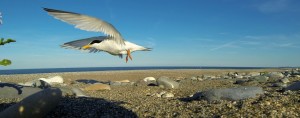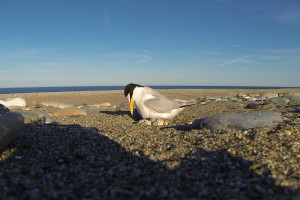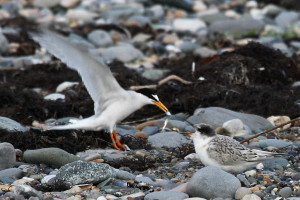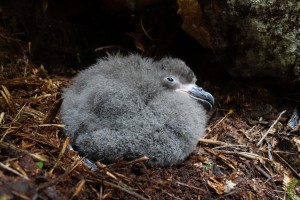- The remarkable bird life of the Wakatobi Islands, SE Sulawesi: hidden endemism and threatened populations - 10/07/2020
- The Bird Life of Wawonii and Muna Islands Part I: biodiversity recording in understudied corners of the Wallacea region - 30/06/2020
- Comparing the biodiversity and network ecology of restoredand natural mangrove forests in the Wallacea Region. - 09/12/2019

When attempting to conserve a rare animal population sometimes every individual counts. Conservationists regularly go the extra mile to protect their study species. The conservation efforts implemented for the Little Tern (Sternula albifrons) in Britain and Ireland demonstrate the success these efforts can have. This species nests on shingle beaches and had experienced catastrophic population declines due to increasing development and use of beaches by people. Little Tern adults are very vulnerable to disturbance and their eggs are particularly vulnerable to walker’s boots! Thankfully a network of wardened colonies, run by a mixture of conservation organisations and enthusiastic volunteer groups, succeeded in stabilising this species’ population.
However the Little Tern has lost much of its former range and is increasingly dependent on wardened colonies for their continued existence on these islands [1]. Being concentrated in a densely populated protected areas has made them acutely vulnerable to predators. This has led wardens at the nationally important colony at Kilcoole in Co. Wicklow to adopt a practice of fostering Little Tern eggs abandoned after a depredation event in an attempt to maximise colony productivity, outlined in our recent paper in the latest issue of Irish Birds.

As Little Tern colonies are often squeezed into small protected areas this makes them a beacon to hungry predators. Corvids (members of the crow family), can be a danger to colonies. They are vigorously mobbed by the terns, but sometimes manage to slip through the defences. It was noticed that corvids often only managed to take one egg from a nest, perhaps because the parents were then more vigilant. However within a day of having an egg taken, the parents abandoned the remaining eggs in every case observed. This may have been due to anticipation of the predator’s return (Little Terns depend upon their egg’s camouflage to protect their nest), or in an attempt to re-lay a full clutch. However clutches laid later in the season often have poorer survival rates [2].
To maximise colony productivity, Kilcoole wardens fostered abandoned eggs abandoned after depredation events to other nests on the same incubation schedule when the colony experienced corvid depredation in 2011 and 2014. Nests were confirmed abandoned after the parent’s failed to return to incubate for several hours and the eggs went cold. The parents in recipient nests always accepted the foster eggs, apparently not questioning why they had gained an extra egg! Where possible eggs were fostered to other nests which had experienced partial depredation but had not yet been abandoned, replacing the eggs lost. Having a full clutch again seemed to stop the parents abandoning the nest. Fostering eggs resulted in the fledging of an additional 5 Little Tern chicks, a small but worthwhile number given the precarious status of the Irish populations.
The fact that the fostered eggs remained viable despite hours without incubation in cold conditions further demonstrate the extraordinary robustness of seabird eggs. In a previous paper we wrote about how Little Terns recollected eggs which have been washed out by tides and moved them into new nests. Many of these eggs hatched successfully even after hours without incubation, exposure to freezing seawater and potential mechanical damage from being moved.

This robustness can prove a boon for conservationists working with endangered species. In a recent case an egg abandoned by an inexperienced pair of Chatham Island Tāikos (Pterodroma magenta) was successfully fostered to another pair after being abandoned for 10 days. Even after all this time without incubation a healthy chick was hatched, an important victory as only 150 of these birds are left in the world, showing the potential value of egg fostering.

While the aspiration must always be for animal populations to be self-sustaining, in many cases hands on conservation measures are necessary to ensure a population’s survival. In order to ensure the continued survival of the Little Tern in Britain and Ireland wardened colonies are still necessary, at least until they experience a full tern around in fortunes.
Author: Darren O’Connell
Photo credits: Little Terns – Andrew Power and Peter Cutler. Chatham Island Taiko Chick – Dave Boyle.
A special thanks to all my co-workers on the Kilcoole Little Tern project, the volunteers who make the project tick and project manager Dr Stephen Newton of BirdWatch Ireland.
[1] Balmer, D., Gillings, S., Caffrey, B., Swann, B., Downie, I. and Fuller, R. (2013) Bird Atlas 2007-11: the breeding and wintering birds of Britain and Ireland. HarperCollins, UK.
[2] Nager, R.G., Monaghan, P. and Houston, D.C. 2000. Within-clutch trade-offs between the number and quality of eggs: experimental manipulations in gulls. Ecology 81: 1339-1350. DOI: 10.1890/0012-9658(2000)081[1339:WCTOBT]2.0.CO;2

